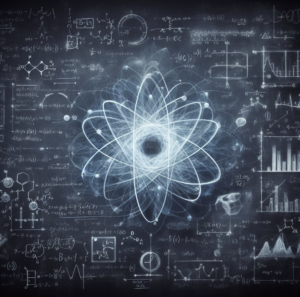The Mysteries of Quantum Physics: Understanding the Unseen World
"Exploring the Enigmatic Realm of Quantum Mechanics"

The Mysteries of Quantum Physics: Understanding the Unseen World
Quantum physics, or quantum mechanics, delves into the behavior of particles at the smallest scales, challenging our understanding of the universe and pushing the boundaries of what we know about reality. It’s a field that fascinates both scientists and curious minds alike due to its perplexing concepts and counterintuitive findings. Let’s explore the mysteries of quantum physics and uncover what makes this branch of science so intriguing.
The Mysteries of Quantum Physics

What is Quantum Physics?
Quantum physics is the study of matter and energy at the atomic and subatomic levels. Unlike classical physics, which deals with everyday phenomena, quantum physics addresses the behavior of particles that are much smaller than atoms. At this scale, particles exhibit strange and unusual properties that defy classical logic.
The Mysteries of Quantum Physics
The key principles of quantum physics include the concept of wave-particle duality, quantization of energy, and the uncertainty principle. These ideas are foundational to understanding how particles interact with each other and with their environments.
Wave-Particle Duality
One of the most famous aspects of quantum physics is wave-particle duality. This principle suggests that particles, such as electrons and photons, exhibit both wave-like and particle-like properties depending on how they are observed. For example, light can behave like a wave, spreading out and interfering with itself, but it can also act like a particle, with discrete packets of energy called photons.
This duality challenges our classical understanding of particles as being either waves or particles. Instead, quantum objects can exhibit characteristics of both, depending on the experimental setup and observation.
The Uncertainty Principle
Another fundamental concept in quantum physics is the uncertainty principle, formulated by Werner Heisenberg. This principle states that it is impossible to precisely measure both the position and momentum of a particle simultaneously. The more accurately we know a particle’s position, the less accurately we can know its momentum, and vice versa.
The Mysteries of Quantum Physics
This uncertainty is not due to limitations in measurement technology but is an intrinsic property of quantum systems. It implies that at a fundamental level, there are limits to what we can know about the behavior of particles.
The Mysteries of Quantum Physics
Quantum Entanglement
Quantum entanglement is another intriguing phenomenon where particles become interconnected in such a way that the state of one particle instantaneously affects the state of another, regardless of the distance between them. This phenomenon was famously described by Einstein as “spooky action at a distance” because it challenges our classical notions of how information can travel.
The Mysteries of Quantum Physics
Entangled particles remain linked in such a way that measuring the state of one particle provides immediate information about the state of its entangled partner. This has profound implications for our understanding of space and time and has led to developments in quantum computing and cryptography.
Quantum Superposition
Quantum superposition is the principle that particles can exist in multiple states simultaneously. For example, an electron can be in a superposition of different energy levels until it is measured. When a measurement is made, the particle collapses into one of the possible states.
The Mysteries of Quantum Physics
This principle is famously illustrated by the thought experiment known as Schrödinger’s cat, where a cat is simultaneously alive and dead until observed. While this is a theoretical construct rather than a practical scenario, it highlights the strange nature of quantum mechanics.
Applications of Quantum Physics
Despite its abstract nature, quantum physics has practical applications that impact our daily lives. Technologies such as semiconductors, lasers, and MRI machines rely on principles of quantum mechanics. Quantum computing and quantum cryptography are emerging fields that promise to revolutionize information processing and security.
The Mysteries of Quantum Physics
Quantum computing leverages the principles of superposition and entanglement to perform complex calculations at speeds far beyond traditional computers. Quantum cryptography, on the other hand, uses quantum principles to create unbreakable codes for secure communication.
The Mysteries of Quantum Physics

The Future of Quantum Physics
As research in quantum physics continues to advance, we are likely to uncover even more mysteries about the fundamental nature of reality. New experiments and technologies will further challenge our understanding and could lead to breakthroughs that reshape our view of the universe.
Quantum physics remains one of the most exciting and enigmatic areas of science. Its principles challenge our classical intuitions and offer a glimpse into the underlying fabric of reality. As we delve deeper into this unseen world, we continue to expand our knowledge and push the boundaries of what we thought was possible.
In conclusion, quantum physics offers a fascinating journey into the unseen world of particles and their behavior. It challenges our perceptions and invites us to rethink our understanding of the universe. As we explore these mysteries, we gain not only scientific insights but also a deeper appreciation for the complexity and wonder of the natural world.
